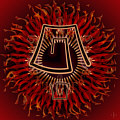|


© Janet Preslar |
CHILDREN'S LITERATURE... a BRIEF History: Aesop's Fables |
Children's Literature has evolved over the years in response to the world's changing ideas about children and childhood.
Family closeness, reflected in extended families and regions of related individuals, was a product partly of the tendency for its populations to be fairly stationary. Traditionally, many folks would be born and die within a 25 miles radius.
"Many moves, as from villages and towns, are circulatory: the people begin at, go away from, but ultimately return to the same dwelling place and community" (Chapman).
While this has changed due to wars and economic changes in an increasingly less fuedal and more capitalist society, this trend is turning completely around and now Asian countries are in the top ten for migration due to war and economics.
Japanese Children's Literature Examples
Chinese Children's Literature Examples
Southeast Asian Children's Literature Examples
Themes:
Honor, Bravery, Duty and Loyalty, magic
Characters: animals, spirits children (usually boys)
royalty and workers
Works CitedCirculation in Population Movement: Substance and concepts from the Melanesian case by Murray Chapman and R. Mansell Prothero feds.) (London, Routledge & Kegan Paul, 1985) 483 pages.
Saltman, Judith. Trade and Plumbcake Forever. The Riverside Anthology of Children's Literature, 6th ed. Houghton Mifflin, 1985.
© T. T. Eiland, August, 2006
Last modified: August 5, 2006
|
